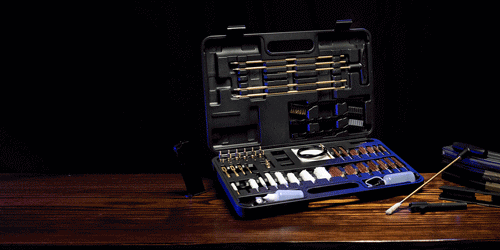Foreword
When you find yourself in the great outdoors, whether hiking, camping, or navigating through an unexpected survival situation, having the right survival tools can mean the difference between life and death. While being resourceful and using your surroundings is crucial, it’s equally important to carry a few essential tools that are reliable and versatile. Here are four survival tools that you must have in your gear collection:

1. Multi-tool or Survival Knife
Why You Need It:
A multi-tool or survival knife is one of the most versatile pieces of equipment you can carry in the wild. It combines several functions into one compact tool, allowing you to accomplish a wide range of tasks that would otherwise require multiple items. From cutting rope and skinning animals to building shelter and preparing food, a well-made multi-tool or survival knife will be indispensable in any survival situation.

What to Look For:
Durability: Look for a knife with a full tang (the metal extends through the entire handle), as this increases strength and durability.
Blade Shape: A versatile blade should have a smooth edge for slicing, a serrated edge for cutting rope or wood, and a pointed tip for piercing.
Additional Tools: Many survival multi-tools also include pliers, screwdrivers, a bottle opener, a can opener, and a file, adding even more utility to your kit.
Tip: A sharp knife is crucial in survival situations, so make sure you know how to sharpen your tool and maintain its edge.
2. Fire Starter or Flint and Steel
Why You Need It:
Fire is one of the most essential survival elements. It provides warmth, light, the ability to purify water, and a method to cook food. Starting a fire can be challenging, especially in adverse conditions such as rain, snow, or high winds. A fire starter or flint and steel is a reliable tool to help you ignite a fire even under less-than-ideal circumstances.

What to Look For:
Durability: Choose a fire starter that can withstand the elements and last for many strikes. Ferrocerium rods are an excellent choice, as they can produce a hot spark even in wet conditions.
Ease of Use: Look for a fire starter that is easy to handle, especially in cold or wet weather, when dexterity may be compromised.
Tip: Practice using your fire starter before you head out into the wilderness. Knowing how to strike the rod effectively and understanding how to create the best tinder will make starting a fire much easier when you need it most.
3. Water Filter or Purification Tablets
Why You Need It:
In the wild, water is often available from natural sources such as rivers, streams, and lakes, but it may not always be safe to drink. Bacteria, parasites, and pollutants can contaminate water sources, making it dangerous to consume. Carrying a portable water filter or water purification tablets will allow you to safely drink from these sources without the risk of illness.
What to Look For:
Compactness: Choose a lightweight, compact water filter that fits easily into your backpack or survival kit.
Efficiency: Look for a filter that removes bacteria, protozoa, and other pathogens. A good filter should provide clean, drinkable water in minutes.
Purification Tablets: These are a lightweight backup option for filtering water when a filter is not available or convenient.
Tip: If you’re using a filter or purification tablets, always read the instructions carefully. Some filters require priming, while others may need time to work, so be prepared ahead of time.
4. Emergency Shelter or Space Blanket
Why You Need It:
One of the biggest threats in a survival situation is exposure to the elements. Hypothermia, dehydration, and sunstroke can occur quickly if you don’t have proper shelter. An emergency shelter or space blanket provides insulation from extreme temperatures and can be a lifesaver in both cold and hot climates.

What to Look For:
Compactness: Choose an emergency shelter or space blanket that’s small, lightweight, and easy to pack.
Material: Space blankets are made from reflective material that retains body heat, keeping you warm in cold environments. Emergency shelters, like lightweight tarps or bivvy bags, can protect you from rain and wind.
Versatility: Some emergency shelters double as ground covers, rain protection, or even emergency signaling devices.
Tip: When using a space blanket, make sure to wrap it around yourself or place it in a shelter to maximize its effectiveness. While they are great at retaining heat, they can also be used as a reflective signal if you need to draw attention to your location.
Conclusion
While there are many other survival tools and gear that could be useful in specific situations, these four essential items are non-negotiable when it comes to staying alive in the wild. A multi-tool or survival knife, fire starter, water purification method, and emergency shelter are the core items that will ensure you have the basic means to survive—whether you're lost in the wilderness or navigating through a planned outdoor adventure.
Before heading out, make sure these tools are packed and that you’re familiar with how to use them effectively. Proper preparation and the right gear can be your lifeline in a survival situation, so invest in high-quality, reliable tools, and always remember that knowledge and skill are just as important as the gear you carry. Stay safe, stay prepared, and never underestimate the power of having the right tools when you need them the most.





